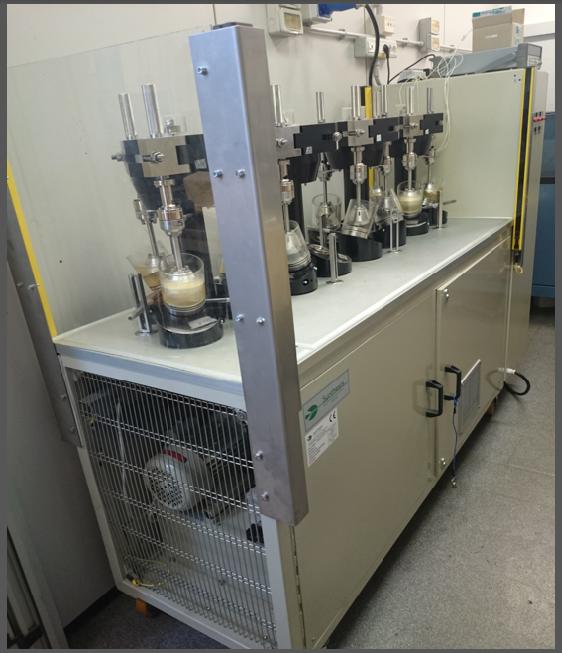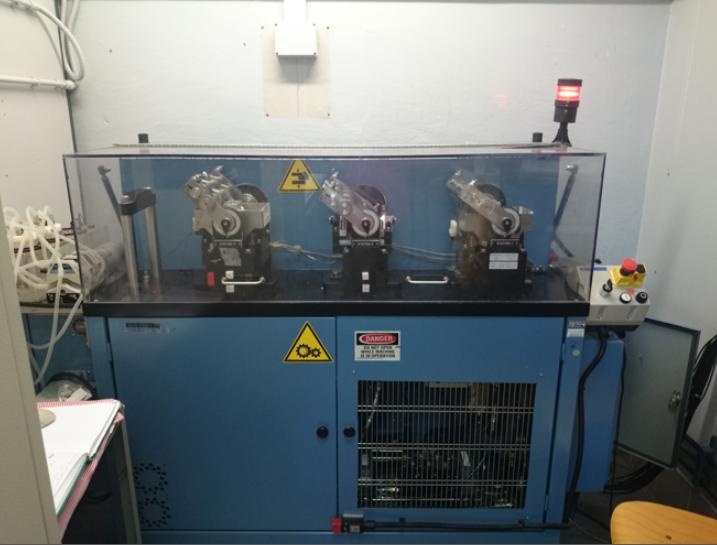Introduction
The word tribology was first used in a landmark report by Jost as referenced by Bhushan. The etymology has to be referred to the Greek term tribos meaning rubbing, so that literally this would signify “the science of rubbing”. The equivalent ordinary English language is “friction and wear”. The Oxford dictionary defines tribology as the science and technology of interacting surfaces in relative motion and of related subjects and practices. Tribology as a science succeeds in applying effective analysis to solve problems of great economic significance for social communities, that is, reliability, maintenance, and wear of technical equipment, ranging from spacecraft to medical devices. Interest in the essential parts of tribology is older than recorded history. It is well-known that drills made during the Palaeolithic period for drilling holes or producing fire were fitted with bearings made from antlers or bones, and potters’ wheels or stones for grinding cereals, had preferable requirement for some form of bearings.
This science includes different disciplines such as friction, lubrication theory and technique, study and use of lubricants, microscopic and macroscopic theories of wear, study and use of wear resistant materials.
In particular, friction comes into play in the production processes and influence forces, powers, in play, consumption and quality of the parts. The wear changing surfaces and geometries of moulds and tools determining the consistency and quality of the geometries produced. Finally, the lubrication in the production processes is essential both in the manufacturing operations and in the operation of the machines.

In the orthopaedics field, wear of the prosthesis is a significant clinical problem that involves, today, too many patients.
In total hip/knee replacement, improving the quality and outcomes in patients requires careful evaluation of the clinical data available, in order to fully assess the existing strengths and weaknesses. Holders of arthroplasty have become and continue to become younger. Each year runs over a million total hip and knee arthroplasty. This implies that the implants and materials used must be highly qualitative, in particular as regards resistance to wear. The total joint arthroplasty should be based on clinical trials in order to obtain the best possible results.

In this regard, the research group of tribology conducts basic research and industrial use of simulators wear. In this way they are used protocols that allow to replicate/simulate particularly extreme conditions, thus establishing the limits of performance for the material.
There are several reports on the wear rates of different combinations: ceramic/polyethylene vs. metal/polyethylene. The cross-linked polyethylene achieved good results in both combinations. Undoubtedly, the surface roughness of a material is an indication of a good wear behaviour or not. The roughness is less for the ceramic-on-ceramic bearing.
The section of Tribology runs wear tests on medical devices for both hip or knee such as: ceramic-on-ceramic; metal-on-metal; metal-on-polyethylene; ceramic-on-polyethylene.
Other tests/set-up on other medical devices (ankle, shoulder, etc.) could be negotiated in order to define a protocol.
The group of Tribology has participated as a partner in several national and European projects. It should be emphasized, in particular, the participation in:
- BIOKER, GROWTH 2000, Contract nº G5RD-2000-00483.
- NANOKER, INTEGRATED PROJECT, Contract nº FP6-515784-2.
- COST ACTION 533 (2006-2010).
- COST ACTION NEWGEN MP1201 (2013-2017).
- TEMPUS project WIMB, Contract no. 543898-TEMPUS-1-2013-1-ES-TEMPUS-JPHES (2013-2016).
- http://www.wimb.fink.rs.
Selected publications of the Tribology group:
(full list available at this web address)
- In silico total hip replacement wear testing in the framework of ISO 14242-3 accounting for mixed elasto-hydrodynamic lubrication effects. Ruggiero, A., Sicilia, A., Affatato, S.. 2020 Wear 460-461, 203420
- Wear characterization and contact surfaces analysis of menisci and femoral retrieved components in bi-condylar knee prostheses. Affatato, S., Ruzzi, S., Milosevic, M., Ruggiero, A.. 2020 Journal of the Mechanical Behavior of Biomedical Materials 110, 103959
- Wear simulation of ceramic-on-crosslinked polyethylene hip prostheses: A new non-oxide silicon nitride versus the gold standard composite oxide ceramic femoral heads. Yorifuji, M., Affatato, S., Tateiwa, T., (...), Pezzotti, G., Yamamoto, K.. 2020 Materials 13(13), 2917
- Knee wear assessment: 3D scanners used as a consolidated procedure. Affatato, S., Valigi, M.C., Logozzo, S.. 2020 Materials 13(10), 2349
- Revision of a monoblock metal-on-metal cup using a dual mobility component: Is it a reasonable option?. Affatato, S., Castiello, E., Amendola, L., (...), Prudhon, J.L., Tigani, D.. 2020 Materials 13(9), 2040
- Surface analysis on revised hip implants with stem taper for wear and failure incidence evaluation: A first investigation. Affatato, S., Ruggiero, A.. 2019 Measurement: Journal of the International Measurement Confederation 145, pp. 38-44
- Registry study on failure incidence in 1,127 revised hip implants with stem trunnion re-use after 10 years of follow-up: limited influence of an adapter sleeve. Affatato, S., Cosentino, M., Castagnini, F., Bordini, B.. 2019 Acta Orthopaedica 90(5), pp. 417-420
- Comparison of meshing strategies in THR finite element modelling. Ruggiero, A., D'Amato, R., Affatato, S.. 2019 Materials 12(14),2332
- Preliminary results of the tribological performance of new modular temporary knee spacer antibiotic-impregnated. Affatato, S., Foroni, F., Merola, M., Baldacci, F.. 2019 Journal of the Mechanical Behavior of Biomedical Materials 95, pp. 205-209
- In silico optimization of femoral fixator position and configuration by parametric CAD model. Korunovic, N., Marinkovic, D., Trajanovic, M., (...), Mitkovic, M., Affatato, S.. 2019 Materials 12(14),2326
- Does the body mass index influence the long-term survival of unicompartmental knee prostheses? A retrospective multi-centre study. Affatato, S., Caputo, D., Bordini, B.. 2019 International Orthopaedics 43(6), pp. 1365-1370
- A critical analysis of TKR in vitro wear tests considering predicted knee joint loads. Affatato, S., Ruggiero, A.. 2019 Materials 12(10), 1597
- Tribological performances of total knee prostheses: Roughness measurements on medial and lateral compartments of retrieved femoral components. Affatato, S., Merola, M., Ruggiero, A.. 2019 Measurement: Journal of the International Measurement Confederation 135, pp. 341-347
- Materials for hip prostheses: A review of wear and loading considerations. Merola, M., Affatato, S.. 2019 Materials 12(3), 495
- In vitro 3D Wear Characterization of Knee Joint Prostheses. Valigi, M.C., Logozzo, S., Affatato, S.. 2019 Mechanisms and Machine Science 73, pp. 3855-3863.
Contacts and Locations
Massimiliano Baleani
phone +39 051-6366865
fax +39 051-6366863
Istituto Ortopedico Rizzoli
Centro di Ricerca Codivilla-Putti
via di Barbiano, 1/10
40136 Bologna (Italy)
